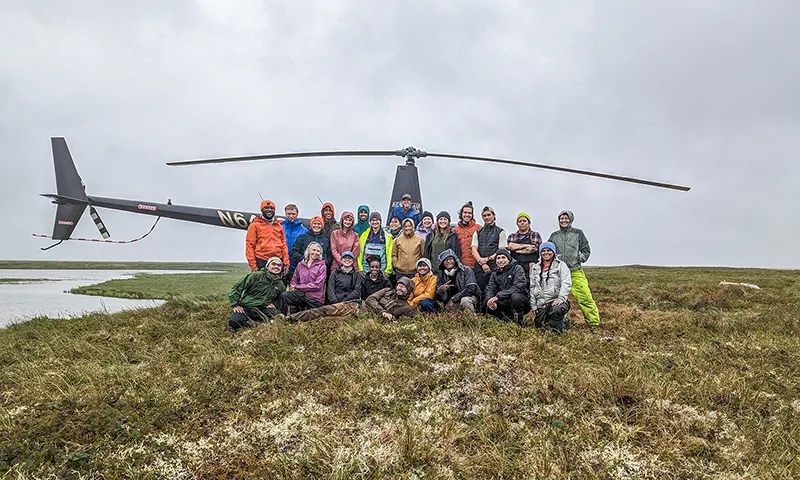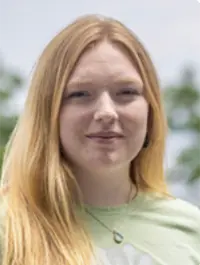The Pulteney Street SurveyWinter '24

With other Polaris Project researchers, MaryBridget Horvath ’24 arrived in the Yukon Delta in Alaska last summer to study permafrost melt and the effects of climate change in the Arctic.
ON THE SCIENTIFIC FRONTIER
From Seneca Lake to the Yukon River, the challenges of field research build expertise for MaryBridget Horvath ’24.
BY COLIN SPENCER ’19
Last summer, MaryBridget Horvath ’24 spent two weeks tracking permafrost melt in Alaska with the Polaris Project. Stationed in the wilds of the Yukon Delta, she was in unfamiliar geographical territory, but thanks to previous research experience with her advisor, Professor of Geoscience David Finkelstein, Horvath had the confidence to transform raw data into a clearer picture of Alaska’s changing environment.

During her first year at HWS, Horvath (right) worked alongside Finkelstein, collecting samples from the Colleges’ data buoy that helps measure Seneca Lake’s water chemistry and seasonal trends. It was a dive into the deep end, so to speak, with ample data but little else to go on.

“The whole idea was building the research by building confidence,” says Finkelstein (right) — confidence to graph data and shape questions around the results: “What do you see? What do you think you see? What do you wish you had?”
After learning to collect samples and interpret data, Horvath was soon taking the lead on the HWS research vessel, the William Scandling, identifying the location and water depth and running the data meters with Finkelstein’s assistance.
“I hadn’t been exposed to this ‘nobody knows the answer’ type of work before,” says Horvath, noting that the experience has “really helped me grow and develop my analysis skills” in the face of emerging research.
It prepared her well for her work in Alaska, where, through the Polaris Project, she and peer researchers from across the world convened to manage their own research on climate change and its effects on the Arctic.
Horvath examined the literal downstream effects of melting permafrost, tracing the water flow to lakes and bogs, documenting the nutrients it carries and how the influx impacts water chemistry.
She says the opportunity to build on Arctic melt and climate change research, particularly “because it’s such a novel environment...is really fascinating to me.... [and] super cool.”
Horvath presented her initial findings at the American Geophysical Union’s fall conference in San Francisco. Meanwhile, her investigation into the sediments in the area continues.
Having observed her growth as a researcher since her first year at HWS, Finkelstein is certain that Horvath has developed the skills and confidence to “firmly stand in front of her science, and...firmly defend the decisions she has made.”
